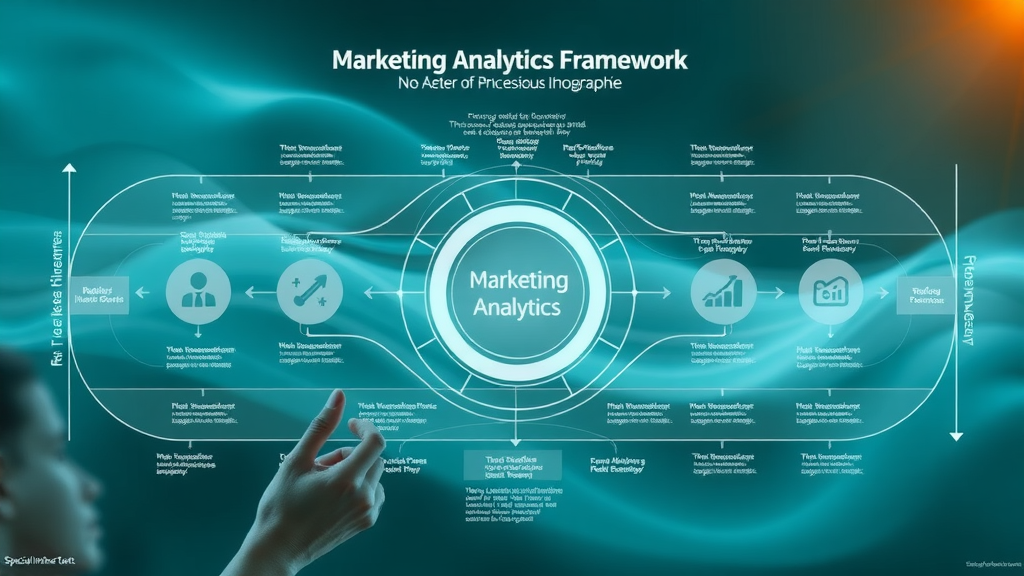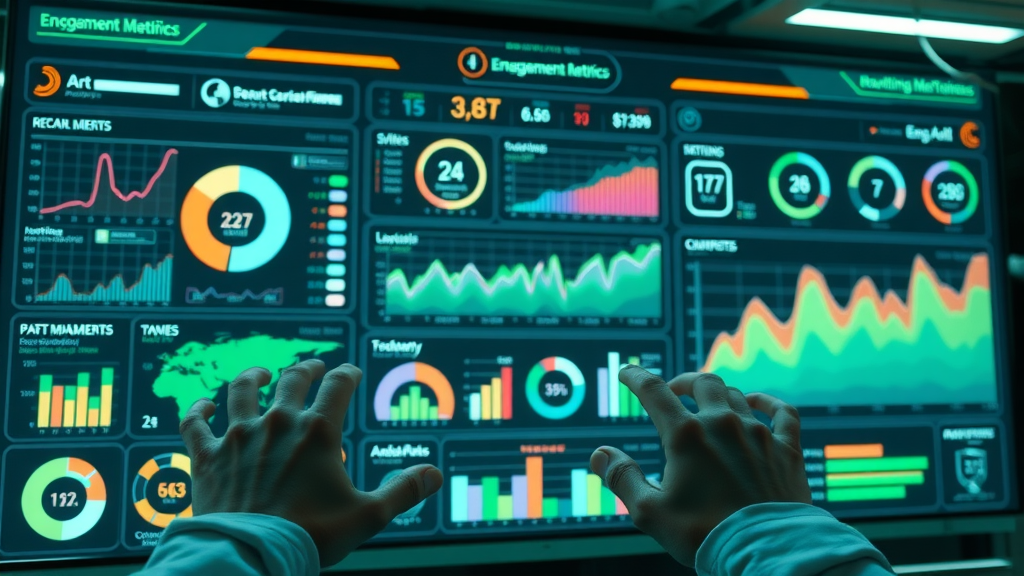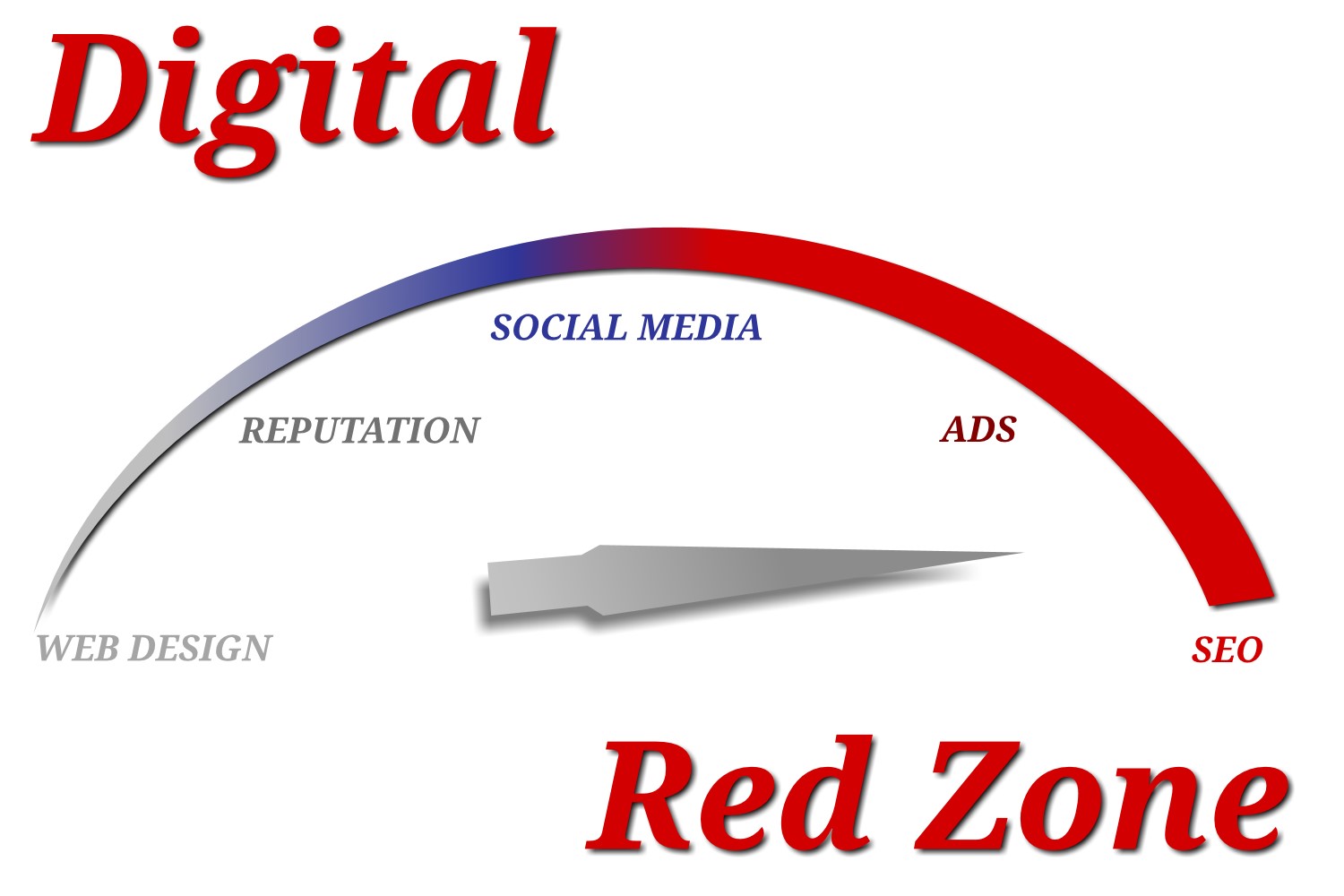Master content marketing analytics For Maximum Engagement

Did you know that over 60% of marketing leaders credit content marketing analytics with driving better decisions , yet very few have an established analytics framework in place? If you’ve ever questioned how the most successful brands consistently outperform with their content, the answer lies in their data-driven approach. This comprehensive guide will reveal how you can transform marketing insights into strategy, propel your audience engagement, and carve out a clear lead in the content market .
Understanding Content Marketing Analytics: The Key to Superior Content Performance
- Did you know that over 60% of marketing leaders say content marketing analytics drives better decisions, yet only a fraction have a defined analytics framework? Explore the impact that defined analytics brings to the content marketing ecosystem and discover how data-driven strategies elevate engagement.
At the heart of content marketing excellence lies a thorough understanding of content marketing analytics . These analytics are much more than numbers—they are the driving force behind optimizing every blog post, campaign, and strategic creative decision. Brands with a clear analytics framework report measurably increased engagement rates, improved conversion rates, and stronger overall content performance . This is because harnessing marketing analytics goes beyond intuition, replacing guesswork with actionable insights that fuel sustainable growth.
Consider the power of data-driven content decisions: By analyzing which pieces of content best resonate with your audience and tracking page views , social shares, and bounce rates, you can shift your strategy to create more of what works. Companies with well-defined analytics processes are able to pinpoint high-impact campaigns, refine messaging, and maximize both short-term and long-term content marketing ROI. The difference is game-changing—a commitment to analytics transforms content from a shot in the dark into a precise, effective engine for engagement.

The Fundamentals of Content Marketing Analytics in a Modern Content Market
Defining Content Marketing Analytics and Its Role in Content Marketing
Content marketing analytics involves the systematic collection, measurement, and interpretation of marketing data related to content creation and promotion. This branch of analytics empowers content marketers to uncover patterns, predict audience behavior, and understand exactly how each piece of content performs in the wider content market . Without accurate analysis, even the most well-crafted content risks being overlooked, lost in an increasingly saturated digital landscape.
The primary role of content marketing analytics is to connect content outcomes to business objectives—turning disparate marketing efforts into a seamless, optimized marketing campaign . From tracking engagement rates on blog posts to measuring the impact of a new landing page, these analytics provide a crucial feedback loop. Rather than simply measuring traffic, content marketing analytics focus on deeper metrics such as conversion rates and lead generation that directly correlate with business growth.
Content Analytics vs. Marketing Analytics: Drawing the Distinction for Content Marketers
It’s easy to confuse content analytics with the broader world of marketing analytics —but the distinction is critical for content marketers. While marketing analytics covers a wide spectrum of activities, from email performance to paid ad attribution, content analytics zero in specifically on how pieces of content (like articles, videos, or infographics) move the needle on engagement and conversion.
For example, a content marketer may use content analytics to monitor how a new blog post affects site traffic or influences the bounce rate on a landing page. Meanwhile, marketing analytics might measure overall campaign ROI, channel attribution, or the impact of budget shifts. Content analytics provide the granular visibility necessary to perfect every content marketing touchpoint.
“Without data, you’re just another person with an opinion.” – W. Edwards Deming

Why Content Marketing Analytics Is Essential for Content Performance
How Analytics Drive Content Market Success
Today’s content market is more competitive than ever; brands need more than compelling stories—they need proof those stories produce results. That’s where marketing analytics provide an essential advantage. By rigorously tracking key content marketing metrics , marketers can distinguish which blog posts and videos really spark
interest, drive repeat visits, or turn views into conversions.
Take, for instance, the use of analytics tools in content marketing. Content marketers can extract insights about audience preferences, seasonal trends, and even the optimal posting frequency to maximize engagement . Content performance measurement allows you to respond rapidly to underperforming assets, reallocating resources to high-impact content and creating a closed loop of iterative improvement.
Elevating Content Performance Through Data-Driven Decisions
A major advantage of content marketing analytics is the ability to elevate every aspect of your content through actionable, data-driven decisions. Imagine being able to pinpoint the exact headline or CTA that consistently generates a higher conversion rate —and scaling that insight across all your future blog posts or landing pages.
Smart marketers create feedback loops between content creation, release, and analytics review. Instead of guessing what will capture your audience’s interest, you base every decision—from topic choice to channel allocation—on solid marketing data . This approach is proven to increase not just traffic, but the overall impact and efficiency of your marketing campaign as well.
Case Study Table: Comparing Content Marketing Metrics Before and After Analytics Implementation
| Metric | Before Analytics | After Analytics Implementation |
|---|---|---|
| Page Views | 2,500/month | 6,000/month |
| Bounce Rate | 75% | 52% |
| Avg. Time on Page | 58 seconds | 2 min 15 sec |
| Conversion Rate | 0.7% | 2.3% |
| Lead Generation | 24/month | 74/month |
This table demonstrates the quantifiable leap in content performance and engagement made possible by a focused analytics strategy—ultimately doubling or even tripling important metrics after adopting rigorous content marketing analytics .
Key Marketing Analytics Metrics for Measuring Content Performance
Essential Content Marketing Metrics Every Content Marketer Should Track
To truly unlock the full power of content marketing analytics , content marketers should prioritize metrics that directly reflect engagement and business value. Among them, page views , average time on page , bounce rate , conversion rates , and lead generation stand out as the most important content marketing metrics for measuring real content performance .
Monitoring these metrics empowers you to answer critical questions: Which blog posts captivate your audience the longest? How many visitors convert to leads via your landing page? What percentage of traffic returns? By keeping a close eye on these figures, you can skillfully direct your content strategy to channel efforts where they yield maximum ROI.

Analyzing Blog Post Engagement With Content Analytics Tools
To fine-tune your content for success, use content analytics tools to dissect the engagement patterns of individual blog posts . For example, content marketers should compare metrics like average read time, social shares, comments, and conversion rates to evaluate which posts foster genuine community interaction.
A well-optimized blog post may have high page view numbers, but analytics can reveal deeper narratives—such as whether those views contribute to lowering bounce rate, nurturing return visits, or activating call-to-actions. Such insights allow continuous refinement and calibration of your editorial calendar, enhancing your expertise as a data-driven content marketer.
Bounce Rate, Conversion Rate, and Site Traffic: How Marketing Analytics Reveals Content Impact
The trifecta of bounce rate , conversion rate , and site traffic offers a powerful lens for evaluating the impact of your overall content market effort. A stubbornly high bounce rate, for example, may indicate an audience mismatch or a need to rework the landing page’s messaging. Conversely, tracking an uptick in conversion rates may reveal a winning content format or revised CTA that merits expansion.
By focusing on these analytics, teams can correct course in real time, ensuring marketing efforts are never wasted and valuable lessons are gleaned from every campaign. Utilizing these content analytics effectively transforms qualitative guesses into quantitative wins.
Lists of Top Metrics to Track for Effective Content Marketing Analytics
- Page Views – Track popularity and audience reach for each piece of content.
- Bounce Rate – Uncover whether your content matches visitor intent.
- Average Time on Page – Assess engagement and content quality.
- Conversion Rates – Measure how effectively each asset drives action.
- Lead Generation – Quantify the real business value created by your content.
- Social Shares – Amplify reach and measure audience advocacy.
- Return Visits – Evaluate loyalty and sustained audience interest.
| Metric | Purpose | Key Tool(s) |
|---|---|---|
| Page View | Assess content popularity | Google Analytics, Ahrefs |
| Bounce Rate | Gauge content-audience fit | Google Analytics |
| Avg. Time on Page | Determine engagement depth | Google Analytics, SEMrush |
| Conversion Rates | Measure effectiveness of CTAs | HubSpot, Google Analytics |
| Lead Generation | Track business growth from content | HubSpot, Marketo |
Choosing the Right Analytics Tools: Elevate Your Content Marketing Analytics
Overview of Leading Analytics Tools in the Content Market
Selecting the right analytics tool is mission-critical for tracking, reporting, and optimizing content performance . Google Analytics remains the gold standard due to its robust dashboard and integration options, but savvy marketers also leverage specialized platforms like SEMrush , Ahrefs , HubSpot , and even Sprout Social for channel-specific insights. Each analytics tool offers unique features—some prioritize multi-channel tracking, while others excel in content segmentation, real-time reporting, or powerful data visualization.
To thrive in the content market , modern marketers must deploy a blend of these tools tailored to their business size and channel mix. Assess the scalability of a tool, compatibility with existing workflows, and the depth of its actionable metrics before making an investment. Your content performs best with analytics tools that turn data into clear, strategic action.

How to Integrate Google Analytics for Comprehensive Content Analytics
To unlock comprehensive content analytics , integrating Google Analytics is a foundational step. Start by configuring your main website and all related landing pages with the Google Analytics tracking code. Make use of built-in filters to segment marketing data—such as organic search traffic, bounce rates, or referral sources—for every blog post or content asset.
Google Analytics’ goal-setting and conversion tracking features empower marketers to draw direct connections between content engagement and revenue-driving actions. Advanced users can create custom dashboards to monitor KPIs such as blog-specific conversion rates, audience demographics, or even real-time content performance across channels.

The Role of Specialized Analytics Tools for Social Media Content Marketing
Social media is an indispensable distribution channel in the current content market . Specialized analytics tools like Sprout Social, Hootsuite, and Buffer delve into granular details of social media performance—tracking metrics like follower growth, post reach, engagement rates, and even viral content patterns.
Integrating these platforms into your workflow allows content marketers to attribute social success back to the original blog post, video, or campaign asset. With the right social media analytics tool, teams can A/B test headlines, visuals, and posting schedules to turbocharge content performance on Facebook, LinkedIn, Instagram, and Twitter.
Landing Page Optimization: Using Content Marketing Analytics to Boost Results
The landing page is often the decisive point in any marketing campaign—where interest turns into action. By applying content marketing analytics to every landing page, you gain data-driven clarity on visitor paths, average dwell time, and top-performing conversion triggers.
Use these insights to run split tests for headlines, calls-to-action, or on-page elements. Optimization is not a one-time event, but a continuous loop powered by marketing analytics. This proactive approach guarantees long-term growth in engagement, conversion rates, and overall marketing ROI.
- Features to evaluate in analytics tools: dashboard usability, real-time reporting, content segmentation, integration options, multi-channel compatibility, and visualization features.
How to Build a Content Marketing Analytics Framework for Maximum ROI
Structuring Your Content Marketing Analytics Process: A Step-by-Step List

- Define content marketing goals that align with broader business objectives.
- Select appropriate analytics tools to match your tracking needs.
- Set up baseline metrics for all key content assets and channels.
- Implement robust tagging and segmentation for deeper audience and asset-level insights.
- Automate regular reporting for ongoing monitoring and agile decision-making.
- Analyze, interpret, and refine based on actual marketing data.
- Repeat the process for a culture of continuous improvement and innovation.
Aligning Marketing Campaign Objectives With Content Performance Metrics
To extract the most value from content marketing analytics , align each campaign’s objectives with clear, trackable content performance metrics. For instance, a lead generation campaign should focus on tracking landing page conversions and form submissions. Meanwhile, a brand awareness campaign may prioritize metrics like social shares, return visits, and page views.
This alignment ensures that all content marketing efforts have a data-backed purpose—enabling resource optimization, higher ROI, and a direct path from planning to measurable success.
Using Content Analytics to Refine Your Content Marketing Strategy
The true power of content analytics lies in its ability to continually refine and improve your content marketing strategy . By regularly reviewing analytics insights, you can determine which content formats, topics, and distribution channels deliver the highest value. This cycle of testing, learning, and adapting turns raw data into competitive advantage.
As you tailor content plans based on proven results rather than assumptions, your brand’s authority and engagement grow exponentially. Smart analytics implementation is the backbone of any successful, resilient marketing operation.
“Content marketing analytics is your roadmap to continuous improvement and audience resonance.” – Industry Thought Leader
Implementing Content Marketing Analytics Across Blog Posts, Social Media, and More
Hands-On Example: Analyzing a Blog Post Using Content Marketing Analytics

Let’s break down a practical example. Consider a recently published blog post : after two weeks, you open your analytics dashboard and discover the page received 1,200 views, an average time on page of 2 minutes, and a bounce rate of 45%. Further, social sharing tools reveal that the post was shared 320 times, and Google Analytics attributes 15 newsletter sign-ups directly from the CTA.
With these metrics, you can determine what worked, what needs improvement, and how to scale your next blog posts. If the bounce rate is lower than average and time on page is high, consider featuring this content type more prominently in your editorial calendar for sustained content performance .
Leveraging Analytics Tools for Social Media Content Performance
Social media channels are rich with data, from likes and shares to clicks and comments. Advanced analytics tools can segment engagement by platform, content type, or even target demographic, giving marketers the insight needed to time posts, tailor visuals, or repurpose high-performing blog posts for maximum impact.
Integrating content analytics with social media not only reveals which platforms drive the most traffic but also which specific posts contribute to conversion or lead generation—offering a holistic view across the entire content market .
Content Marketer Best Practices: Combining Data, Creativity, and Storytelling
The best content marketers are part analyst, part creator, and part storyteller. By fusing hard data with ingenuity, you can build content that excites and delivers measurable results. Infuse your creative process with analytics insight—use it to spark new ideas, validate concepts, and deliver topical relevance at scale.
Don’t just monitor what’s already working—look for headline opportunities, emerging trends, and patterns in your analytics dashboard. Sharing data insights with creative teams leads to more resonant messaging, bolder campaigns, and a culture of ongoing improvement.
| Platform | Tool | Blog Metrics | Social Metrics | Landing Page Metrics |
|---|---|---|---|---|
| Website | Google Analytics | Page Views, Time on Page | NA | Bounce Rate, Conversions |
| Sprout Social | NA | Shares, Comments, Reach | Ad Clicks | |
| Hootsuite | NA | Mentions, Retweets, Clicks | Referral Conversions | |
| Landing Page | HubSpot | NA | NA | Form Submissions, Leads |
People Also Ask
What is content marketing analytics?
- Content marketing analytics refers to the practice of measuring, analyzing, and interpreting data from content marketing efforts to understand how content contributes to business goals. It involves tracking metrics such as page views, engagement rates, conversion rates, and more to inform strategy and optimize future content.

What is the 70 20 10 rule in content marketing?
- The 70 20 10 rule suggests allocating 70% of content to what you know works, 20% to new strategies, and 10% to high-risk experiments. Content marketing analytics determine the effectiveness of these allocations and guide strategic adjustments.

Which tool is used for content marketing analytics?
- Popular analytics tools for content marketing analytics include Google Analytics, SEMrush, Ahrefs, and specialized platforms like HubSpot and Sprout Social. Each provides unique features for tracking, reporting, and optimizing content performance.
What are the 4 P’s of content marketing?
- The 4 P’s of content marketing—Planning, Production, Promotion, and Performance—highlight the cycle from conception to results. Content marketing analytics is central to the Performance phase, where metrics drive improvements and success measurements.
Best Practices for Successful Content Marketing Analytics Deployment
Lists of Do’s and Don’ts for Using Content Marketing Analytics Effectively
- Do : Set clear, measurable goals for each campaign.
- Do : Segment your data for deeper insights (by audience, channel, or content type).
- Do : Use analytics tools to track both short-term and long-term metrics.
- Don’t : Rely solely on vanity metrics like likes or page views—dig deeper for real impact.
- Don’t : Ignore multi-channel data or overlook the importance of attribution.
- Don’t : Skip iterative testing and regular optimization.
Quotes from Leading Content Marketers on Marketing Analytics
- “Data-driven storytelling is not just the future of marketing—it’s the present.” – Leading CMOs
- “Analytics empower creativity. The right data is your springboard for breakthrough content.” – Senior Content Strategist
- “Don’t fear analytics—embrace them to discover new opportunities you never imagined.” – Agency Founder

Integrating Content Analytics With Overall Marketing Strategy
A successful marketing strategy incorporates content analytics from ideation through execution. Regularly sharing analytics results with both creative and executive teams drives buy-in and cross-functional alignment. Make analytics reporting a central part of monthly or quarterly strategy reviews to ensure ongoing improvement and organization-wide understanding of what makes your content marketing efforts excel.
Incorporating content analytics into your broader strategy ensures that every marketing effort delivers measurable, business-driving impact.
Common Mistakes to Avoid in Content Marketing Analytics
Pitfalls in Interpreting Content Analytics
Interpreting content analytics is both an art and a science. Some common pitfalls include drawing conclusions from too little data, misattributing spikes in traffic to the wrong campaigns, or overvaluing one-off wins. Avoid the temptation to chase only the highest vanity metric; instead, look for patterns over time and measure against your established KPIs.
Equally important is maintaining a holistic perspective—consider the influence of external factors (like seasonality or news cycles) and always dig for the “why” behind the numbers.
Ensuring Data Integrity and Actionability
- Top mistakes: Ignoring multi-channel data, failing to segment audiences, overemphasizing vanity metrics, and neglecting iterative testing.
Ensuring the integrity of your data is essential for actionable intelligence. Regularly audit tracking code, review attribution models, and confirm that your analytics platforms are capturing the full user journey. Only with reliable marketing data can marketers unlock the true value of continuous content performance improvement.
Actionability comes from connecting insights to clear, tactical next steps—segment audience responses, A/B test different landing page variants, and make sure every metric feeds back into your content marketing strategy.
Content Marketing Analytics in Action: Real-World Success Stories
Case Study: Doubling Engagement Through Strategic Use of Marketing Analytics

One SaaS brand implemented a unified content marketing analytics approach across blog, social, and landing pages—closely tracking key marketing metrics such as bounce rate, conversion rate, and social shares. Over six months, the brand doubled its blog post engagement, increased average time on page by 62%, and ramped up lead generation from organic search by 2.5x.
The success was rooted in frequent iteration, rapid testing, and an openness to let data—not assumptions—drive content decisions. Their journey underscores how focused analytics can revolutionize even mature digital marketing programs.
List of Brands That Transformed Their Content Mark Through Analytics Tools
- HubSpot: Dramatically improved conversion rates through granular funnel analytics and targeted blog post optimization.
- Airbnb: Used behavioral analytics to tailor landing page experiences, significantly reducing bounce rate and boosting bookings.
- Buffer: Leveraged social media analytics tools to repurpose high-performing pieces of content across channels.
| Brand | Analytics Tools Used | Measurable Results | Lessons Learned |
|---|---|---|---|
| HubSpot | HubSpot, Google Analytics | 3X Conversion Rate Increase | Iterative blog post optimization wins at scale |
| Airbnb | Amplitude, Google Analytics | 25% lower Bounce Rate; More Bookings | Personalized landing page journeys |
| Buffer | Sprout Social | Social Reach Doubled | Repurposed high-performers for cross-channel wins |
Frequently Asked Questions
How often should you track content marketing analytics for maximum performance?
For most brands, tracking content marketing analytics weekly is the sweet spot—balancing data accuracy with actionable agility. Use daily check-ins for rapid-response campaigns and monthly/quarterly reviews for longer-term strategy correction. Frequent analysis ensures you don’t miss vital patterns or emerging opportunities.
What are the best analytics tools for B2B vs. B2C content marketing?
B2B marketers often lean on advanced CRM-integrated analytics platforms like HubSpot, SalesForce, or Marketo, which emphasize lead nurturing and multi-touch attribution. B2C marketers may prefer tools with deep social analytics and conversion tracking, such as Google Analytics, SEMrush, and Sprout Social. Select based on your specific channel mix and objectives.
How do you connect content marketing strategy with analytics results?
Align every stage of your content strategy to measurable analytics metrics; set clear KPIs, use analytics dashboards for transparent tracking, and connect reporting cycles with your planning calendar. This ensures that your content marketing strategy is constantly refined, agile, and in sync with audience demand.
What are the most important content marketing metrics for startups?
Startups should focus on high-leverage metrics: site traffic, conversion rate, email signups, and cost per lead. By honing in on these essentials, you ensure rapid learning, efficient use of resources, and a tight alignment between content output and desired outcomes.
When should you pivot your content strategy based on analytics data?
Pivot when you identify consistent underperformance across key analytics (low engagement, declining conversion rates, or rising bounce rate). Use data to validate content hypotheses, then confidently adjust topics, formats, or platforms for a fresh approach.
Key Takeaways for Maximizing Engagement with Content Marketing Analytics
- Data-driven content boosts engagement, continuous analytics refinement accelerates ROI, diverse tools help measure what matters most, and effective frameworks turn metrics into actionable insights.
Your Roadmap: Implement Content Marketing Analytics Today for Sustainable Growth
- Start building your own content marketing analytics process with the steps and tools covered—leverage analytics to make your content market smarter, more targeted, and consistently engaging.
Conclusion
Begin implementing your content marketing analytics roadmap by selecting actionable metrics, deploying robust analytics tools, and fostering a culture of data-driven testing. Smart analytics equal smarter content—and sustainable growth.
Sources
- https://contentmarketinginstitute.com – Content Marketing Institute
- https://hubspot.com – HubSpot
- https://sproutsocial.com – Sprout Social
- https://analytics.google.com – Google Analytics
- https://ahrefs.com – Ahrefs
To deepen your understanding of content marketing analytics and enhance your strategy, consider exploring the following resources:
-
“How to Drive Results with Content Marketing Analytics” : This article from Mailchimp delves into the importance of content marketing analytics, offering insights on evaluating the effectiveness and ROI of your content strategies. It covers key performance indicators (KPIs) and methods to track content performance across platforms. ( mailchimp.com )
-
“Content Marketing Analytics (Key Metrics & Tools Guide)” : The White Label Agency provides a comprehensive guide on essential metrics and tools for content marketing analytics. It discusses how to analyze and interpret content data, set benchmarks, and implement actionable strategies based on analytics. ( thewhitelabelagency.com )
These resources offer valuable insights into leveraging analytics to optimize your content marketing efforts and drive better engagement.
